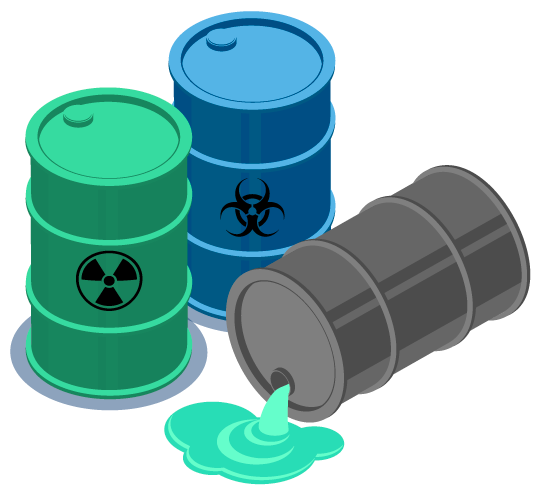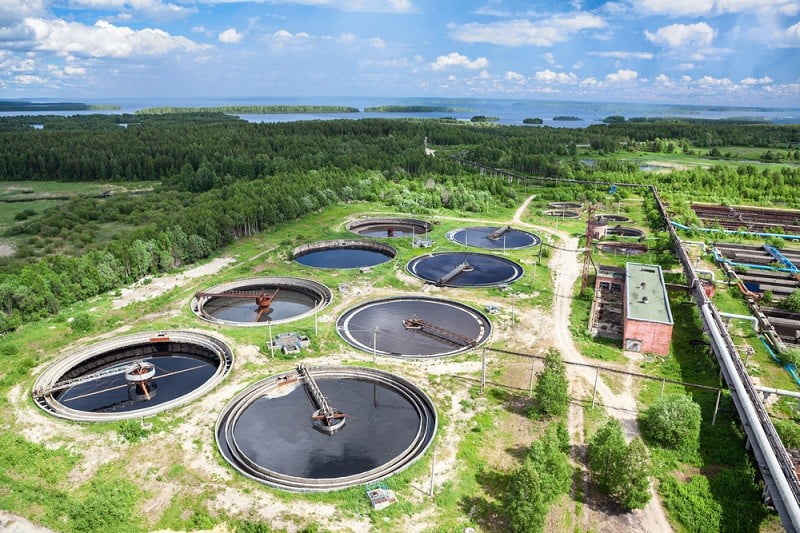Industrial Wastewater Treatment: Customized Solutions for Facility Wastewater Challenges
Industrial Wastewater Treatment: Customized Solutions for Facility Wastewater Challenges
Blog Article
Understanding the Comprehensive Refine of Liquid Garbage Disposal: Finest Practices and Environmental Effect Factors To Consider
The monitoring of liquid garbage disposal is a complex concern that needs a comprehensive understanding of various best practices and their linked ecological effects. From the sorts of fluid waste created to the methods employed for collection, treatment, and final disposal, each action plays a vital role in securing ecosystems and public wellness. As regulative standards advance and modern technology breakthroughs, the discussion around these processes ends up being significantly significant. What ramifications do these modifications hold for future sustainability initiatives, and how can stakeholders make certain that they are effectively dealt with?
Sorts Of Fluid Waste
Comprehending the numerous kinds of liquid waste is necessary for effective monitoring and disposal methods. Liquid waste can be extensively classified into numerous types, each calling for unique handling and treatment strategies.
Industrial liquid waste typically includes unsafe materials, consisting of hefty metals, solvents, and chemicals, created during producing procedures. These wastes demand stringent regulatory compliance to secure human wellness and the environment. Residential fluid waste primarily refers to wastewater produced from houses, including sewage and greywater, which, although less toxic, can still present considerable threats if poorly taken care of.
Agricultural liquid waste, including overflow from farms, often has fertilizers and pesticides that can result in environmental deterioration otherwise dealt with sufficiently. Medical liquid waste, produced from health care centers, consists of contaminated liquids such as physical liquids and chemicals, needing specialized disposal methods to stop infection and ecological contamination.
Finally, oil and grease waste, typically produced by dining establishments and auto industries, can create extreme clogs in drain systems otherwise taken care of properly. Understanding these groups helps with targeted methods for treatment, compliance with regulations, and effective disposal approaches, inevitably advertising ecological sustainability and public wellness safety.

Collection Approaches
Reliable collection techniques are critical for the correct administration of liquid waste, making certain that it is collected safely and efficiently prior to treatment or disposal. Various methods are employed depending upon the type of fluid waste produced, the quantity, and the particular qualities of the waste.
One typical approach is making use of dedicated collection containers or sumps, which are made to catch liquid waste at the source. These systems often include pumps that assist in the transfer of waste to larger storage containers or therapy centers. Furthermore, mobile collection units furnished with vacuum innovation are employed in scenarios where waste is generated periodically or in hard-to-reach areas.
For commercial settings, closed-loop systems can properly reduce leaks and spills, enabling the recovery and reuse of liquid waste. It is additionally vital to train employees on correct collection protocols to alleviate dangers connected with harmful compounds.
Furthermore, executing routine upkeep schedules for collection devices guarantees optimum performance and safety. The combination of innovative monitoring systems can enhance collection effectiveness by supplying real-time information on waste levels and prospective dangers. Overall, effective collection approaches are foundational to lasting fluid waste monitoring techniques.
Treatment Processes
Treatment procedures play a vital role in the monitoring of liquid waste, transforming possibly unsafe materials into secure effluents or multiple-use sources - liquid waste disposal. These procedures can be extensively classified into physical, chemical, and organic approaches, each customized to resolve particular pollutants present in the waste stream
Physical treatment methods, such as sedimentation and purification, work by getting rid of suspended solids and particle matter. These methods are usually the primary step in the treatment chain, successfully decreasing the load on subsequent processes. Chemical therapies entail the use of reagents to counteract damaging materials, precipitate hefty metals, or oxidize natural pollutants, thereby boosting the safety of the effluent.
Organic treatment procedures, including turned on sludge systems and anaerobic food digestion, maximize the natural abilities of microbes to weaken raw material. These methods are particularly effective for wastewater consisting of eco-friendly pollutants. Advanced treatment modern technologies, such as membrane filtering and advanced oxidation processes, are significantly employed to accomplish greater levels of purification.
Including a mix of these treatment methods not just ensures conformity with governing standards however additionally advertises visite site environmental sustainability by recouping useful sources from fluid waste.
Disposal Options
Exactly how can companies make certain the safe and liable disposal of fluid waste? Reliable disposal alternatives are important for protecting public health and wellness and the atmosphere. The primary approaches consist of land disposal, therapy, and incineration complied with by discharge into local wastewater systems.
Land disposal involves the careful containment of fluid waste in assigned land fills, ensuring that it does not leach right into surrounding dirt or water. Incineration, on the other hand, subjects fluid waste to heats, transforming it right into ash and gases, which call for correct filtering to lessen exhausts. This technique appropriates for unsafe wastes that can not be treated through conventional means.
In instances where liquid waste can be dealt with, companies may go with biological or chemical treatment procedures to neutralize harmful elements before releasing the dealt with effluent into metropolitan systems. This route generally aligns with governing needs, making certain that the effluent satisfies security standards.
Inevitably, organizations need to carry out complete assessments of each disposal choice to determine its viability, taking into consideration aspects such as waste composition, governing conformity, and potential dangers to health and the environment. By selecting appropriate disposal methods, companies can contribute to a responsible waste monitoring technique.
Ecological Effect
The environmental influence of liquid garbage disposal is an essential factor to consider for organizations looking for to minimize their environmental impact. Inappropriate disposal methods can cause substantial contamination of water sources, dirt degradation, and damaging effects on regional ecosystems. For example, harmful fluids can leach into groundwater, presenting risks to alcohol consumption water products and aquatic life. Furthermore, the discharge of untreated or improperly dealt with waste into surface waters can cause eutrophication, bring about oxygen exhaustion and the subsequent fatality of fish and various other organisms.

To alleviate these effects, organizations need to adopt finest practices such as implementing find extensive waste treatment processes, promoting recycling and reuse, and sticking to governing standards. By taking a positive approach to fluid waste monitoring, entities can dramatically minimize their ecological impact while sustaining sustainable growth objectives. Eventually, a comprehensive understanding of the environmental impacts linked with fluid garbage disposal is important for informed decision-making and liable stewardship of natural resources.
Verdict
Reliable monitoring of liquid waste is crucial for safeguarding ecological honesty and public health and wellness. By adopting ideal practices in disposal, treatment, and collection, alongside adherence to governing requirements, the possibility for dangerous contamination of ecosystems can be considerably lowered. Constant innovations in innovation and processes add to sustainable waste monitoring efforts. Eventually, a comprehensive understanding of fluid waste disposal not just mitigates environmental influences yet also promotes a commitment to liable source monitoring and environmental stewardship.
The monitoring of fluid waste disposal is a multifaceted problem that needs a comprehensive understanding of different ideal methods and their connected ecological effects. From the kinds of liquid waste produced to the techniques used for collection, therapy, and last disposal, each step plays a vital role her response in guarding communities and public health and wellness.The ecological influence of fluid waste disposal is a critical consideration for organizations seeking to reduce their ecological impact. Inevitably, a comprehensive understanding of the ecological influences linked with fluid waste disposal is crucial for educated decision-making and liable stewardship of all-natural sources.
Eventually, an extensive understanding of liquid waste disposal not just alleviates environmental impacts but additionally fosters a commitment to responsible source monitoring and environmental stewardship.
Report this page